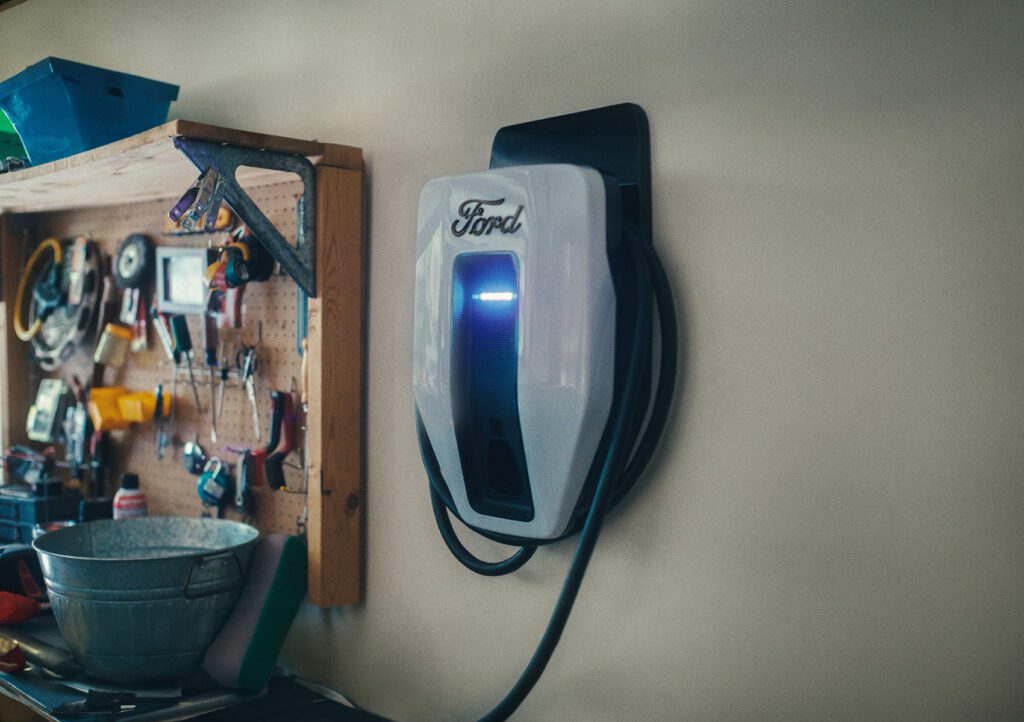The “Ford Power Promise” focuses on drivers who can most easily charge at home—still the low-hanging fruit for EV sales. It’s working.
Selling electric vehicles was always going to be a challenge, especially for established U.S. brands like Ford and Chevrolet. They require a lot of explanation by salespeople unfamiliar with EVs; not every shopper lives where charging will be easy and convenient; and misperceptions and myths abound.
Last summer, Ford research found intenders’ perceptions of EV driving were more demanding than those of EV owners—and both were more demanding than the actual realities of EV use.
To address these challenges, last year Ford launched its “Ford Power Promise,” a marketing and support package to ease EV-curious shoppers (“intenders”) over the hump to buying and driving an electric vehicle.
The Power Promise program was first announced in September 2024, and Ford attributed its best-ever quarterly EV sales in Q4-2024 to awareness of the plan. Ford has extended the plan several times, most recently through June 30, 2025. In early April 2025, it launched the plan in Great Britain and Northern Ireland as well.
The Ford Power Promise in the U.S. has four main features:
- Ford will provide buyers with a free Charge Station Pro home charging station along with free standard installation
- Ford’s BlueOval Charge network of charging networks simplifies EV journeys by routing drivers among charging stations from multiple networks, including Tesla Superchargers
- Ford warrants its EV batteries for 8 years or 100,000 miles
- Ford says it offers 24/7 access to EV advisors to answer owners’ questions as they arise
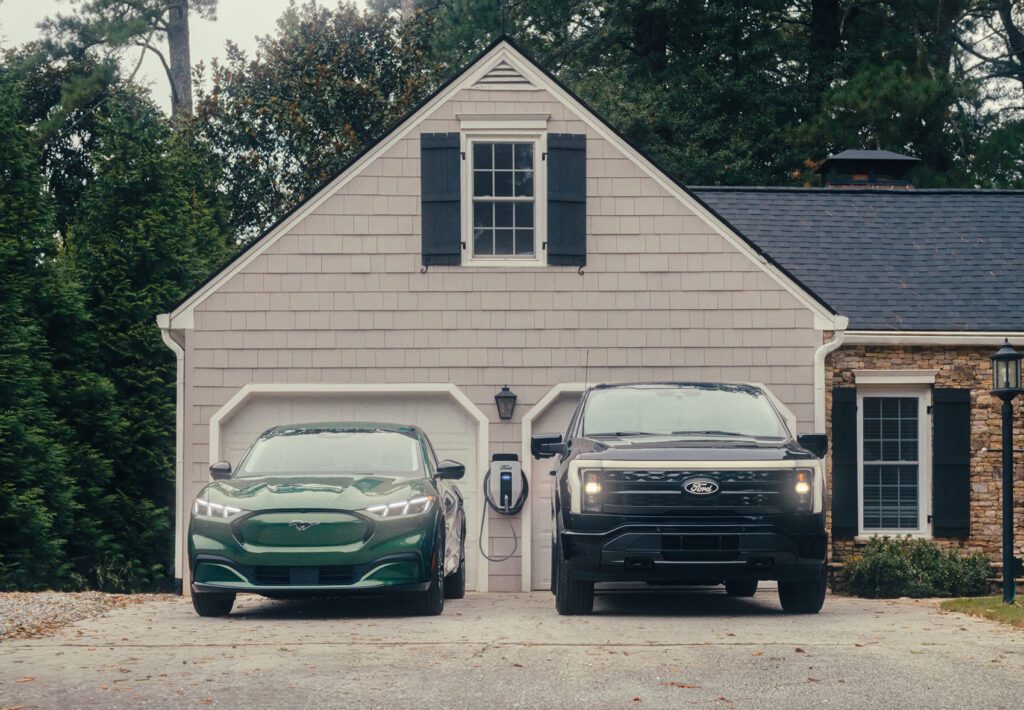
“Home is where the charge is”
Because car shoppers don’t have a gas pump in their garage, the idea of recharging an EV at home isn’t always intuitive. Yet roughly 80% of EV miles come from charging at home or work—not from public charging stations, whether 240-volt AC Level 2 cables or DC fast-charging for road trips.
For Ford, new-car buyers who can charge at home are the low-hanging fruit among EV shoppers. With sales-weighted new-vehicle transaction prices hovering around $47,000, only a minority of households now has enough income to afford a new car in the first place.
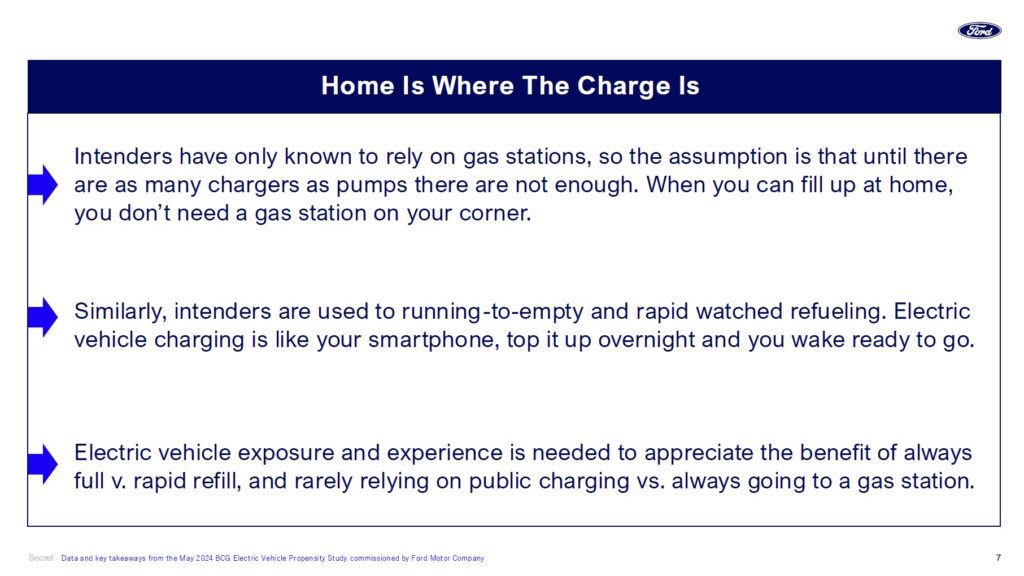
Of households that can afford a new vehicle, Escalent’s 2021 ‘EV Forward’ study found fully four out of five have dedicated off-street parking. That parking is likely no more than 100 feet from some form of electrical supply, usually much closer. That makes installation of a Level 2 home charging station possible, although the details of each installation will vary considerably.
Ford won’t cover every circumstance; a “standard” installation might include adding a breaker into the home panel for a dedicated 240-volt circuit. It won’t cover running a higher-amperage power line from the curb to the house, for instance. But tens of millions of homes should be able to take advantage of that standard installation, whatever it may entail.
Focus on overnight recharge
In a December media presentation on the Ford Power Promise, Martin Delonis, the company’s senior manager of strategy for EVs, said half of all new-car shoppers are well-suited to home EV charging. “Home is where the charge is,” he said, citing it as a mantra to help hesitant shoppers understand that more often than not, they won’t have to hunt for public charging stations.
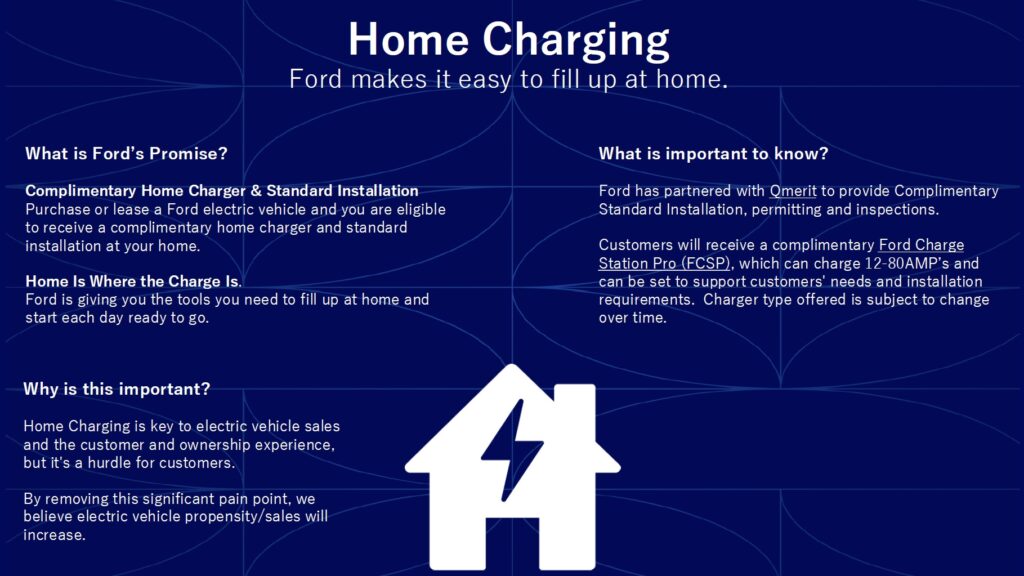
Delonis said the company’s dealers, in particular their salespeople, are encouraged to stress the pluses of overnight recharging. Those include reduced off-peak or dedicated EV-charging rates; less load on the household (and parenthetically the electric grid) during sleep hours; and the advantage of having “a full tank” every morning.
The charge rates for the Ford electric vehicles covered by the program are a maximum of 11.3 kW for the Mach-E crossover utility and e-Transit delivery van, and 19.2 kW for the F-150 Lightning full-size pickup truck.
For apartment-dwelling buyers of Ford EVs who can’t take advantage of the free home charger and installation, a cash rebate is offered instead—initially $2,000, now $1,000. Delonis noted that all the other elements of the plan (BlueCharge Network, 24/7 help line, battery warranty, etc.) still apply to those buyers. Still, the free charging station is clearly the biggest lure for the program.
It’s worth noting Ford is not the only maker offering a free charging station and standard installation. For its 2024 and (U.S.-built) 2025 Ioniq 5 hatchback utilities and both model years of Ioniq 6 sedans, Hyundai will provide buyers with a free ChargePoint Home Flex Level 2 charging station and hardwired installation—though not any other installation costs, taxes, or fees.
Buyers who can’t install a charging station at home can opt for a $400 public-charging credit good for two years at ChargePoint network stations. The offer is similar to one it ran at the end of 2023 for three different models.
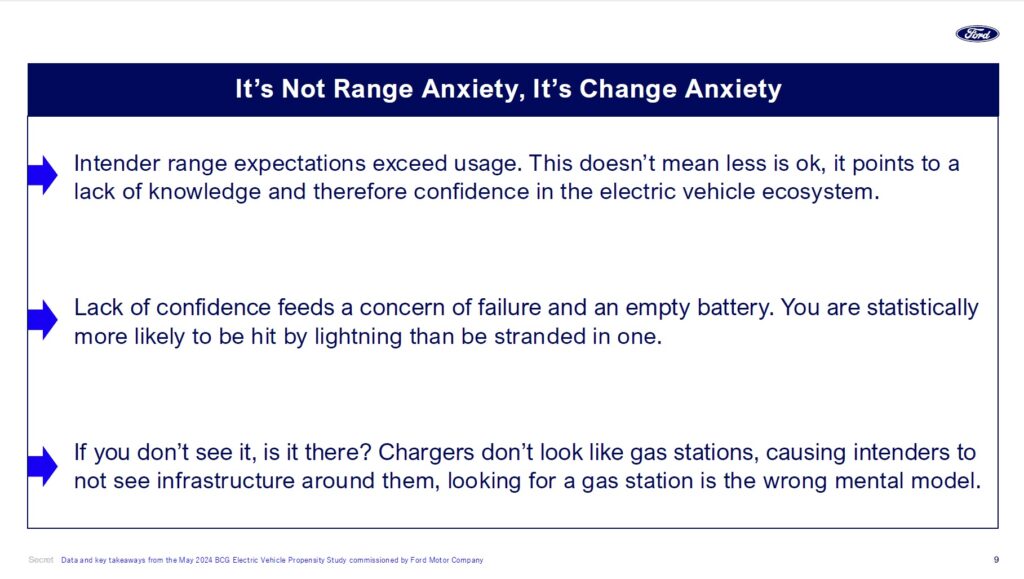
Strong sales showing
After canceling a planned battery-electric 3-row SUV in August 2024, Ford’s lineup of EVs is now well-established in the market. That’s another way of saying it hasn’t launched any new vehicles for a while. But its EV sales have grown steadily, and the company says the Power Promise is a major driver for those increases. It explicitly attributed its highest-ever EV sales in Q4 last year to growing awareness of the program, launched just weeks earlier.
Ford sold 30,176 EVs that quarter, out of a total of 97,865 sold throughout 2024. The first quarter of 2025 saw sales of 22,550 EVs; Ford noted 11,607 Mach-Es were sold “despite limited inventory.” But, it said, “2025 model year Mustang Mach-E SUVs are now in transit and will make their way to dealer lots in April.”
The Ford Power Promise is offered to all U.S. retail buyers of 2024 and 2025 Ford Mustang Mach-E crossover SUVs, F-150 Lightning full-size pickups, and e-Transit delivery vans. It does not apply to purchases of the small number of plug-in hybrids Ford makes. Details differ slightly in Great Britain and in Northern Ireland; there, Ford sells Mach-E and e-Transit models, but also two Europe-only SUVs developed on the Volkswagen MEB platform, the (European) Explorer and the Capri.
This article draws on material from an earlier piece by the same author for the Electric Power Research Institute, or EPRI, an independent, nonprofit research organization for the U.S. electric utility industry.
ADDITIONAL SOURCES:
- Ford consumer site: Ford Power Promise
- Ford press release, Apr 1, 2025: Ford Pickups Have Best Start in Over 20 Years; Q1 U.S. Retail Sales Grow, Led by F-Series, Electrified Vehicles and Bronco
- Ford press release, Jan 3, 2025: Ford U.S. Retail Sales Grow at Double the Industry Pace in 2024, Led by Trucks, Hybrids, Electric Vehicles and Lincoln
- Ford press release, Sep 30, 2024: Ford Power Promise Gives Electric Vehicle Customers New Confidence



